Volkswagen Passat Estate Review 2024
Written by Ivan Aistrop
Quick overview
Pros
- Huge passenger space and boot
- Strong on interior quality
- Very well equipped
Cons
- Massively over-complicated infotainment system
- Some ergonomic quirks
- Not cheap to buy
Overall verdict on the Volkswagen Passat Estate
"A very good all-rounder in the family car stakes. If you want something roomy and posh, but you don’t want an SUV, then the Passat should be on your shortlist."
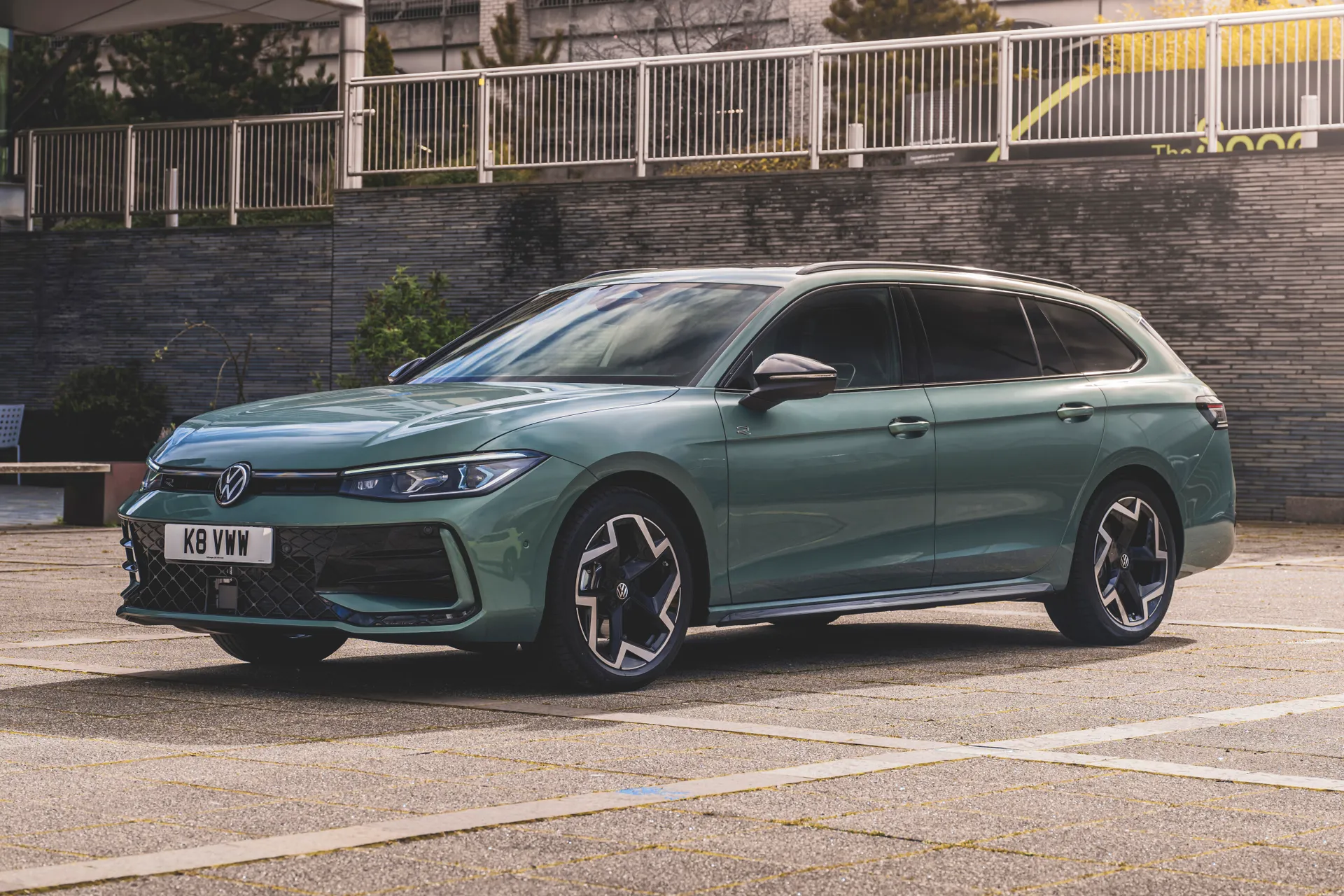
Consider for a moment, if you will, the significance of the Volkswagen Golf hatchback. It’s enjoyed so much success, and been around for such a long time, that it’s looked upon by the motoring industry as something of an icon. However, did you know that the Passat has been around for even longer? It first arrived in 1973, a year before the Golf’s 1974 introduction, and since then, 34 million of the things have been sold. So why no icon status for the Passat? Especially when the latest ninth-generation version, released in 2024, is more worthy of it than ever. Find out why in our Volkswagen Passat review.
You might say that the Passat is an example of a dying breed. The relentless popularity of SUVs has taken its toll on the sales of traditional saloon and estate cars, and many manufacturers have stopped building them as a result. Indeed, the latest Passat itself is only offered in five-door estate form, and outside of premium offerings, there are only a handful of mainstream models left for it to compete with.
But there’s still plenty to like about the good old family estate car, and the Passat is a very compelling one. First of all, there’s the sheer amount of space inside it: the car has grown to almost five metres long, and as a result, it has a massive amount of space for people and luggage.
The car is also impressive in terms of build quality. The assembly feels very solid and the materials are posh and tasteful, so it’s a pleasant thing in which to spend time. Every version also comes with a vast amount of luxury, safety and infotainment kit as standard.
By way of irony, it’s that last bit - infotainment - that accounts for the Passat’s biggest Achilles' heel. Not because it’s lacking in technology in any way, but quite the opposite: there’s just too darned much of it. And that’s not us being stuffy and old-fashioned.
You see, Volkswagen seems determined to purge its cars of physical switches and buttons, meaning an over-reliance on touchscreen technology for operating the car’s myriad functions. This makes the system - however impressive it looks - far too complicated and too confusing to use: even tech-savvy teenagers will struggle to fathom it.
You’ll have very little quarrel with the way the Passat drives, though. It delivers family-friendly comfort and an easy-going nature, helped further by impressive refinement. The single petrol engine on offer at launch has fairly limited performance, but it won’t be long before more powerful options are added to the range, some in the form of potentially fuel-sipping plug-in hybrids.
Granted, the Passat isn’t cheap, but it costs less than most prestige-badged equivalents of a similar size, and it’s a good bit less showy. For the right sort of buyer, that’ll make it just the ticket.
Looking for a used car for sale? We've got 100s of Volkswagen Approved Used Cars for Sale for you to choose from, including a wide range of VW Passat Estates for sale. If you're looking for the older version, you need our used Volkswagen Passat Estate (2015-2023) review.
Is the Passat Estate right for you?
If you need a practical family car with shedloads of space for people and luggage, plus a smart, sophisticated and plush-feeling interior, but you’ve made the decision that you don’t want an SUV, then the Passat will be a great choice for you. It feels sophisticated next to the few mainstream rivals that remain, but it’s less showy and slightly less expensive than large estate cars with a premium badge.
What’s the best Passat Estate model/engine to choose?
To begin with at least, there’s only one choice of powertrain, the 1.5-litre eTSI mild hybrid petrol. Performance is adequate rather than blistering, so if you want a little more, then it might be worth hanging on for the powertrains destined to come along later, those being plug-in hybrids with either 204PS or 272PS, and later still, a 2.0-litre turbo petrol with 204PS and four-wheel drive.
On the trim front, the entry-level Life car really isn’t missing much, so we’d stick with that, although the upgrade to Elegance trim does add a few desirable bits and pieces.
What other cars are similar to the Volkswagen Passat?
The relentless popularity of SUVs has meant that many manufacturers are no longer bothering to sell large family estates, so where once the Passat would’ve had dozens of rivals, it now only has a handful. Among mainstream carmakers, it’s pretty much only the mechanically related Skoda Superb Estate and the handsome Peugeot 508 SW that remain. Large estates are much more common in the premium space, and on that score, you’re looking at rivals such as the Audi A4 Avant and Audi A6 Avant, BMW 3 Series Touring and BMW 5 Series Touring, Mercedes-Benz C-Class Estate and Mercedes-Benz E-Class Estate and the Volvo V60 and Volvo V90.
Comfort and design: Volkswagen Passat Estate interior
"Quality and practicality in the Passat are both excellent, but there are various ergonomic quirks, not least with the overly complex infotainment system."
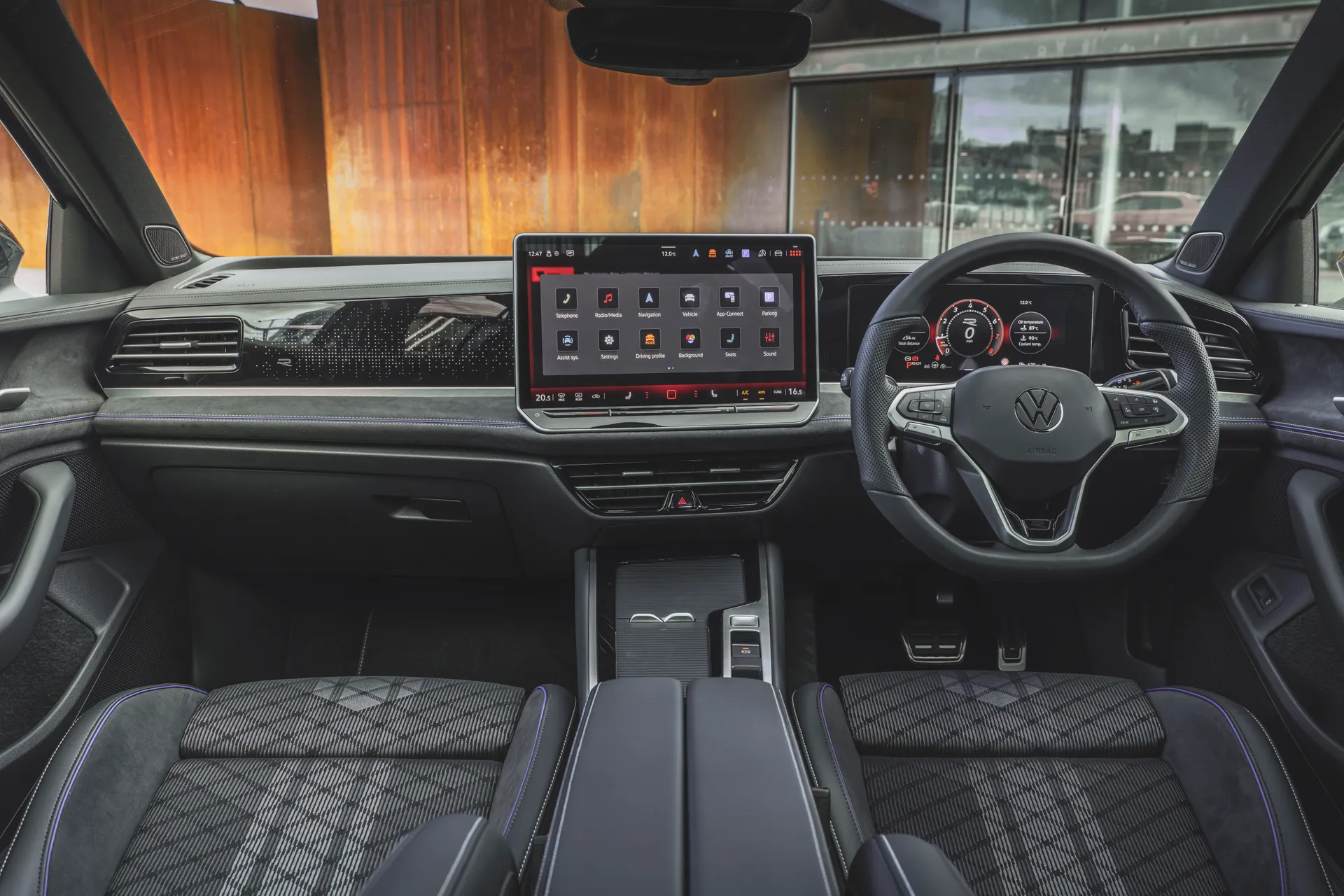
Getting comfy behind the steering wheel is fairly easy: in all versions, you crank your seat up and down with a manual lever, but the backrest moves electrically for a bit of extra precision. There’s plenty of adjustment in the steering column, too, so drivers of all shapes and sizes should be able to strike a pose that suits them.
You shouldn’t have any major complaints over visibility with large windows all around the car, and all versions come as standard with front- and rear parking sensors and a reversing camera if you need some extra help.
The design looks very clean and modern, and that’s because Volkswagen has almost entirely purged the Passat’s cabin of physical buttons. It looks good, but it also brings about some ergonomic challenges that we’ll go into further detail on in the Infotainment section.
There are strange ergonomic quirks elsewhere, too. Like in most cars, you have stalks behind the steering wheel, and most drivers will be used to the left one operating the indicators and the right one doing the wipers. Here, though, the right one is the gear selector for the automatic transmission, and so the left stalk has to take care of both wipers and indicators, and that takes a while to get used to.
Quality and finish
Volkswagen’s cars often feel posher than mainstream rivals, if not quite as plush as premium competition, providing a sort of middle ground on the quality front. And that’s a trend continued by the latest Passat. The glossy-looking infotainment screens immediately make things feel high-end and high-tech, while the plush-looking materials and finishes directly in your eyeline are a treat for both your eyes and your fingertips.
Explore the lower reaches of the cabin, and you will find plastics that aren’t quite up to the same high standard, but that’s something you’ll observe in the vast majority of cars, and those plastics are good enough that they don’t undermine the general feeling of poshness.
Infotainment: Touchscreen, USB, nav and stereo in the Volkswagen Passat Estate
All versions of the Passat get the same infotainment system as standard, which brings together a 10.25-inch digital instrument panel behind the steering wheel and a large 12.9-inch central infotainment touchscreen in the middle of the dashboard (f that’s not enough for you, then a massive 15.0-inch central screen upgrade is available on the options list). You also get eight speakers, DAB, Bluetooth, Apple CarPlay and Android Auto, wireless smartphone charging and voice control. All the tech bases covered, then.
The whole thing looks great, with sharp, modern graphics and really slick screen transitions, while the screen also reacts quickly and reliably to taps and swipes.
Unfortunately, the system is also hopelessly confusing to use. With almost no physical switchgear in the car, pretty much everything has to be operated to the screen, and the sheer amount of icons, shortcuts and tiles on display as a result makes the screen look cluttered despite its generous size. There are seemingly endless menus and submenus, most of which aren’t arranged very logically, and many of them are signified by ambiguously-designed icons. Performing even the most basic of tasks can seem far too complicated and time consuming, and we found that things didn’t get much better with time, either. Throw in the fact that touchscreens are inherently more distracting to use on the move than physical buttons and dials, and you have something of an ergonomic horror-show.
The salt in the wound is that when you’re driving along, desperately trying to find and use a specific function on the screen, the car’s driver attention monitor detects that your eyes have been diverted from the road for too long, and the car then tells you off.
Space and practicality: Volkswagen Passat Estate boot space
The writing has been on the wall for the traditional saloon car for a number of years, and that’s why the latest ninth-generation Passat is available as an estate car only. And a pretty gosh-darned big one at that. The car now measures 4,917mm long, 1,506mm tall and 1,852mm wide, making it 144mm longer and 20mm wider than its predecessor.
Precisely 50mm of the extra length has gone into the car’s wheelbase (the distance between the front and rear wheels), and that means legroom is more generous than ever: there’s a huge amount of the stuff. Even with six-foot-plus occupants in the front seats, there’s space behind for passengers of a similar size to stretch out in comfort, with no fear of their knees getting anywhere near the chairs in front. Headroom and shoulder room are also generous, so the passenger compartment feels roomy in every direction, especially when carrying two in the back. There’s room to squeeze in a third when needed, although the person in the middle will have to sit with their feet positioned either size of a very bulky transmission tunnel in the floor.
The amount of luggage space provided is just as impressive. The boot is enormous at 690 litres - a full 40 litres more than its predecessor - and the space is usefully square-sided. The rear seats fold down in a 60/40 split (not as versatile as the 40/20/40 split in some rival family cars), and this can be done using catches either in the boot or on top of the seats themselves. The backrests lie almost flat, and with the moveable boot floor in its uppermost position, there’s no step between them and the boot floor, leaving you with a usefully level loading area. That also leaves barely any load lip at the boot entrance, and you get a smidge of extra space under the boot floor. To make life even easier, a powered tailgate and powered load cover is provided as standard throughout the range.
Handling and ride quality: What is the Volkswagen Passat Estate like to drive?
"The VW Passat has an easy-going nature that’s entirely appropriate for a car of this type."
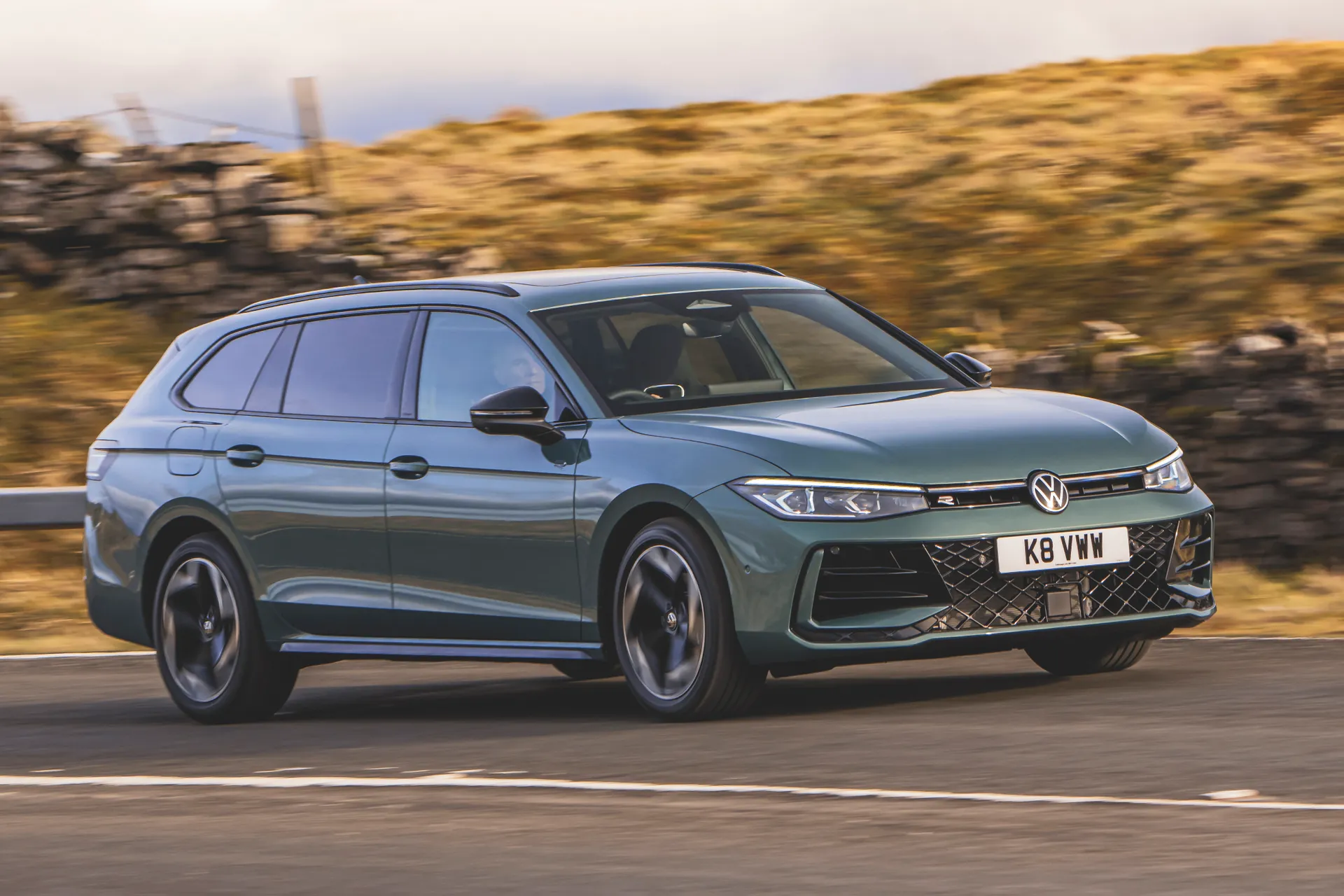
The Life and Elegance versions have a passive suspension setup as standard, and it strikes a decent balance of comfort and control. The ride perhaps has a firmer edge than you might expect, with some ripples and ruts in the road surface making themselves known in the cabin, but it’s still a comfortable car, and suspension does a good job of taking the sting out of larger bumps and potholes.
Encounter a corner, and the car has solid control over the movements of its bulky body, and there’s lots of grip, so everything feels secure and tidy. The sheer size of the car stops it from feeling what you’d call agile, but it’s entirely precise and predictable. The steering helps on that score, because it’s responsive, accurate and nicely weighted.
Spec your Passat in R-Line trim, and you’ll get Volkswagen’s Dynamic Chassis Control system as standard (it can also be added to the other trims as an optional extra). This varies the stiffness of its dampers according to which of the driving modes you select. We haven’t tried it yet, though, so we can’t yet tell you how effective it is.
What engines and gearboxes are available in the Volkswagen Passat Estate?
To begin with, only one choice of powertrain is offered in the VW Passat, and it’s a 1.5-litre turbocharged four-cylinder petrol engine, fitted with mild hybrid technology. Known as the eTSI, it delivers 150PS to the front wheels via a standard seven-speed automatic gearbox.
Pace is adequate, but not much more than that. The Passat is now a very big car at almost five metres long, and the modest engine has its work cut out in dragging the huge, heavy body around. You’ll notice the engine revving surprisingly hard just to maintain a moderate pace (it’s not noisy, but it is noticeable) and the gearbox searching around, trying to figure out which of its ratios is best-suited to the task at hand. If you need more pace and give the throttle pedal a shove, the revs climb even higher, but you feel a disproportionately small increase in forward momentum. It’s fine if you’re not in a hurry and just adopt a relaxed driving style, but it will get a little frustrating when you want to get a wriggle on.
Not long after launch, the eTSI will be joined in the Passat range by the eHybrids. These are plug-in hybrids that use the eTSI petrol engine combined with an electric motor, bigger 19.7kWh battery and six-speed automatic gearbox to deliver either 204PS or 272PS. These will likely have a significant uplift in performance. In the fullness of time, there will also be a 2.0-litre petrol version with 204PS and four-wheel drive.
Refinement and noise levels
Like we said a moment ago, you can hear the four-cylinder petrol engine revving away as it struggles to maintain even moderate pace, but it’s not loud or bothersome. You also hear the automatic gearbox searching around quite a lot for the optimum ratio, but at least the frequent shifts are smooth. Elegance and R-Line cars come with extra sound insulation compared with the entry-level Life car that we sampled, but wind- and road noise was hardly deafening in that one. So, whichever Passat you choose, it should be a reasonably serene and relaxing companion.
Safety equipment: How safe is the Volkswagen Passat Estate?
The Passat hasn’t yet been crash-tested by the experts at Euro NCAP, but once it has, we’ll update this review. The standard safety kit provided looks competitive, with adaptive cruise control, a driver attention/drowsiness monitor, autonomous emergency braking that detects pedestrians and cyclists, three Isofix points and dynamic road sign display all standard across the range.
MPG and fuel costs: What does the Volkswagen Passat Estate cost to run?
“Given that all Passats are currently powered by the same engine, and have the same seven-speed dual-clutch automatic gearbox and front-wheel-drive layout, then it’ll come as virtually no surprise that there’s very little variation in official WLTP fuel economy figures.”
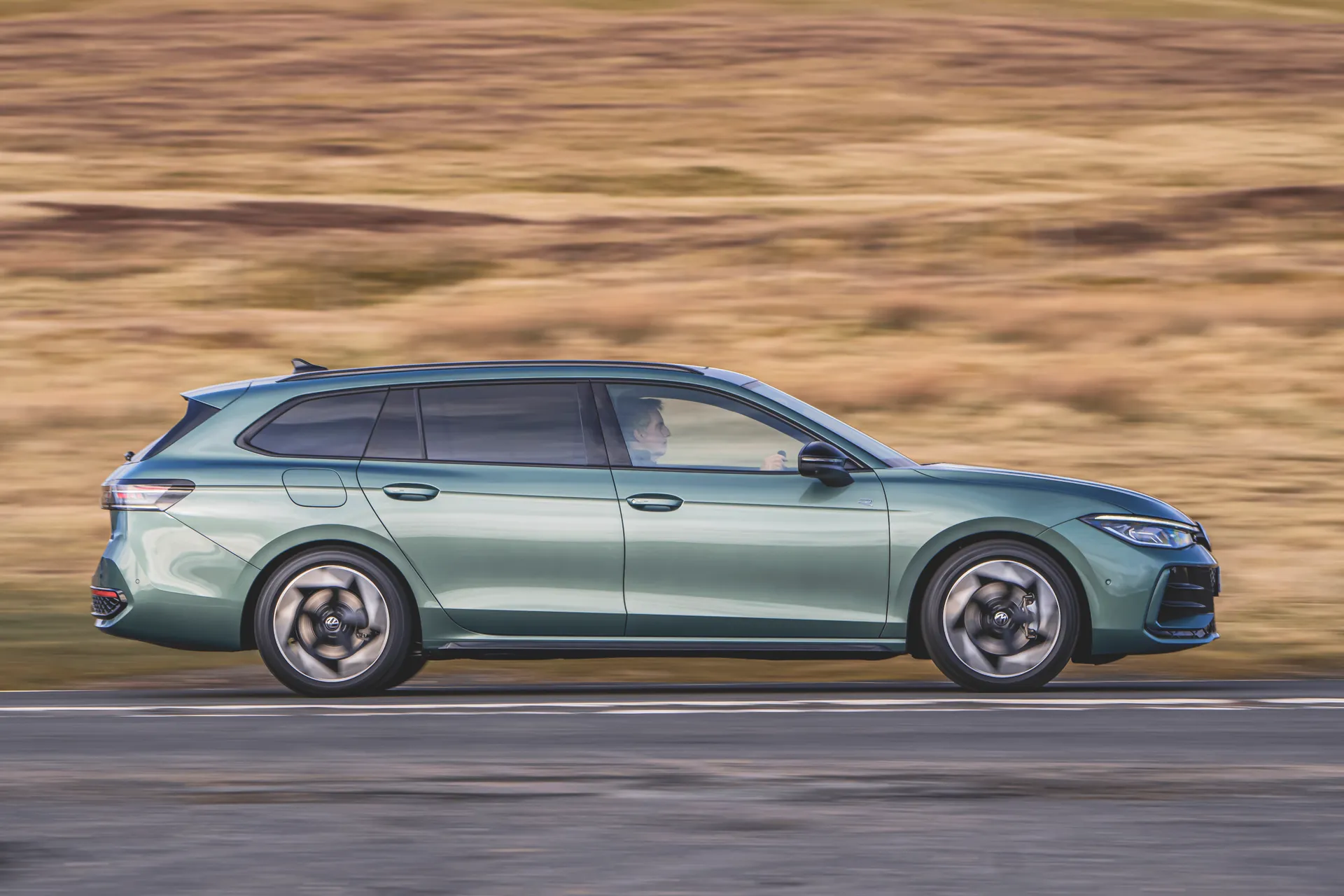
The R-Line returns 50.0mpg on the nose, while the smaller wheels of the other versions mean they do marginally better, with the Life returning 51.8mpg and the Elegance 51.5mpg. Expect closer to 45mpg in the real world.
When the plug-in hybrid versions arrived, these will doubtless have MPG figures stretching into the hundreds, but as ever, these figures should be treated with extreme caution as the official tests are unrealistically flattering to PHEVs. How much you actually get will depend on how much you have to depend on the petrol engine.
How reliable is a Volkswagen Passat Estate?
In the latest HonestJohn.co.uk Satisfaction Index, Volkswagen was named as the fourth least reliable manufacturer of the 29 to feature. In the overall satisfaction standings, the brand came in 21st position: a little better, but still hardly dazzling. The previous Passat wasn’t namechecked specifically, but we know the brand’s overall performance was brought down by the Golf and Polo, so there’s hope that the Passat might fare better.
Insurance groups and costs
As all ninth-generation Passats are currently powered by the same engine, there isn’t much variation in insurance groupings. The Life sits in group 30 (of 50, 50 being the most expensive), while Elegance cars are group 31 and R-Line cars are group 32. Groupings for the plug-in hybrid versions haven’t been announced yet, but we expect them to be considerably higher given their extra power.
VED car tax: What is the annual road tax on a
Although the mild hybrid system in the 1.5 eTSI version of the Passat isn’t the cleverest hybrid system you’ll come across, it is enough to qualify for the £10 annual VED road tax discount for alternatively fuelled cars, Leaving you with £180 to pay per year.
However, that’s only if you choose the entry-level Life trim and stay very restrained with the options list, because this is the only version of the car that’s priced under £40,000 when brand new, and only just. Spend more than that, including optional extras, and your car will then be liable for an additional ‘luxury car’ surcharge that’ll add another £390 to your annual bill for a five-year period between years two and six of the car's life, and that responsibility will be passed on to subsequent owners. If you’re considering a Life as a used car, it’s wise to do an online check with the car’s registration to make sure you know what you’re letting yourself in for.
How much should you be paying for a used Volkswagen Passat Estate?
“As a brand new car, the Passat starts at around £38,500 for the 1.5eTSI Life version. Add around three grand for Elegance trim, and another £1,300 on top for the R-Line.”
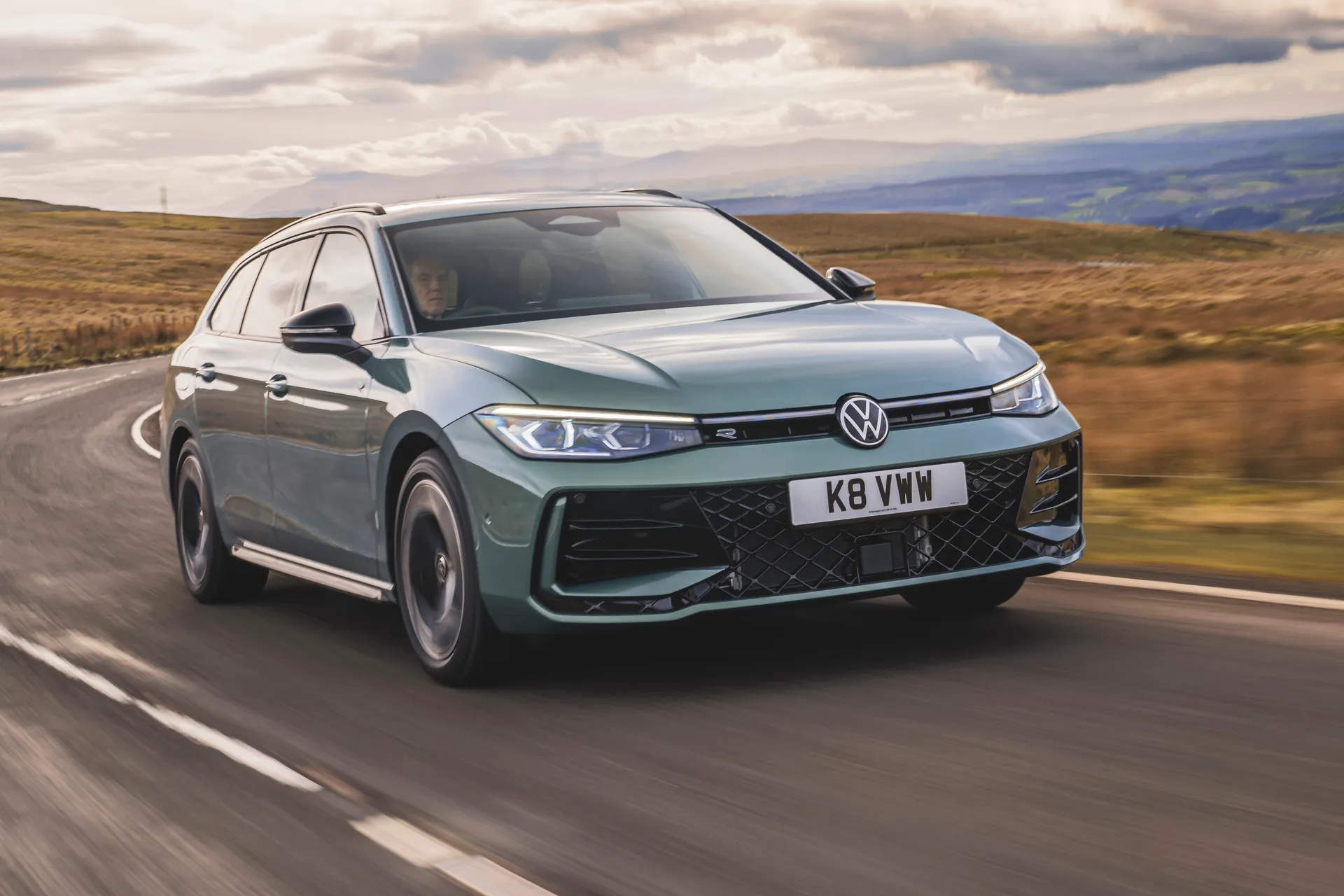
However, the latest ninth-generation Passat is exactly that - a brand new car - so there hasn’t yet been sufficient time for a significant number of examples to find their way onto the used car market. And for those that have, prices haven’t had a chance to fall all that far yet.
Look out for cars that have been pre-registered by dealers to meet sales targets, because these can be a good way of getting an as-new car for a hefty four-figure saving. Sure, you won’t get to spec the car yourself or choose your colour, but you won’t have to wait for it to be built and shipped, either.
Trim levels and standard equipment
Three trim levels are available in the Passat range: Life, Elegance, and R-Line.
Even entry-level Life cars are generously equipped, with 17-inch alloy, powered and heated door mirrors, all-round LED lighting, keyless entry and go, three-zone climate control, heated- and massaging front seats, ambient lighting, automatic lights and wipers, parking sensors, a reversing camera, leather multifunction steering wheel with paddle shifters, part-electric seat adjustment, adaptive cruise control, high-beam assist, a powered tailgate and a powered luggage cover. That’s on top of tall the infotainment and safety kit we talked about earlier.
Elegance cars look a wee bit swisher, with adaptive LED matrix headlights with a light strip running between them, and you also get noise-reducing glass, a heated steering wheel, sports seats with a more sophisticated massaging function, a panoramic sunroof and ambient lighting with 30 colours.
R-Line trim comes with 18-inch alloy wheels and sporty styling elements inside and out, plus the Dynamic Chassis Control adaptive suspension.
Ask the heycar experts: common questions
Is the Volkswagen Passat a good car?
Is the Volkswagen Passat a saloon car?
Is the Volkswagen Passat good value?
Get our latest advice, news and offers
Keep me updated by email with the latest advice, news and offers from heycar.
By submitting you agree to our privacy policy




